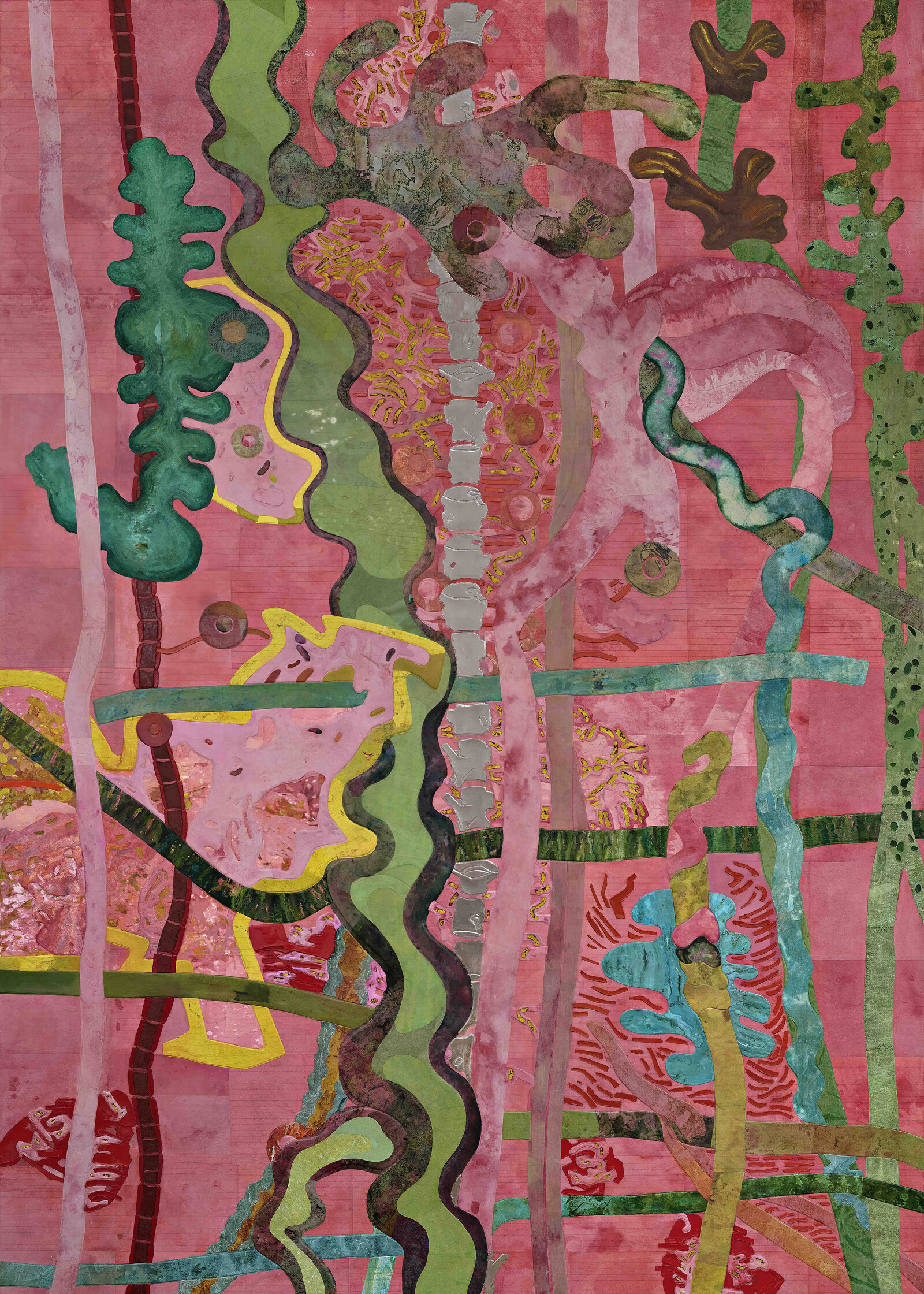All of No Man’s Land Is Ours
December 2, 2023–March 10, 2024
Stedelijk Museum Amsterdam presents the first solo exhibition in the Netherlands of Rotterdam-based American artist Ellen Gallagher (1965, Providence, Rhode Island, US). Entitled All of No Man’s Land Is Ours, the show premieres new works alongside a selection of earlier paintings. Gallagher has transformed the historic building’s IMC Gallery of the museum, also known as the “Hall of Honor”, into a consideration of a futurity that has been with us all along.
Gallagher creates a fluid dynamic between her works and Paul Cézanne’s Scipio. Jointly they produce new understandings: known meanings are altered to merge into the relationships that arise from the interaction and space between the works.
Building up and carving out forms is a consistent and iterative material approach in Gallagher’s Black Paintings, as it is in her Watery Ecstatic series of incised works on paper and recent series of variations on the theme, Ecstatic Draught of Fishes and Fast- Fish and Loose- Fish, all on view here. Two recent paintings reference the property law of whaling, in which a marked fish, or “fast fish”, belongs to the first whaling crew to claim it while a “loose fish” is fair game. Both evocations signal precarious moments of autonomy and futurity between contact and capture. In Gallagher’s constructed scenes of perpetual whale fall, the palladium vertebrae of the sunken whale intermingles with the thick paint units of seabed organisms. These silver bones give way to an integrated ecosystem as the Osedax carves life out of the very stuff of death. Here, the visible gridded ground of pink-washed penmanship paper graphs an emergent site of cyclical return and possibility: a mapping of a no man’s land at the bottom of the ocean.
The backbone of this collective unit is the elongated spine of Cézanne’s Scipio (1866–68), on loan from Museu de Arte de São Paulo (MASP), Brazil. Triangulating this painting and flanking the Stedelijk’s Hall of Honor are two of Gallagher’s Black Paintings, Untitled and Eleganza, which usher in waves of deep-sea blackness. Gallagher links her own application of black rubber in these paintings to Cézanne’s use of thick layers of black paint in his speculative figuration of the black body in Scipio.
She proposes that Cézanne, stirred by the photograph of a disfigured slave named Gordon that was widely circulated by abolitionists, employed black paint like one might apply petroleum jelly to a burn wound. In a way, his layers of paint healed and reversed time, transforming the back of the mutilated slave and reverting to an elastic moment of futurity before the scar has formed—the potent instance of pre-calcified trauma, or the precarious site of potential known as no man’s land.
This reversal to a transitional moment of a possibility recalls the war-torn trenches from which WWI band leader James Reese Europe composed contrametric tracks such as the titular 1919 “All of No Man’s Land is Ours,” which pulsates with the promise of return home, while simultaneously enacting a dual refusal of blackface: be it the soot covered faces of vaudevillian minstrels or bombed soldiers. In rhythmic step with the intentional jitter of Europe’s composition, Gallagher’s built-up constructions manifest a process of ebb and flow, and accumulation and redaction.
All of No Man’s Land is Ours is curated by Vincent van Velsen. Sponsored by ABN AMRO and supported by Mondrian Fund. With special thanks to Gagosian and Hauser & Wirth.



